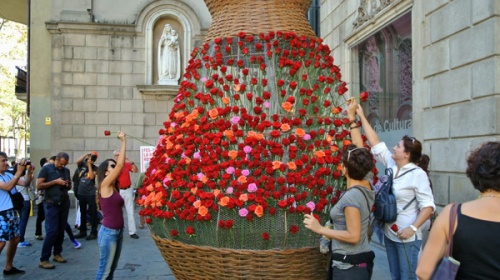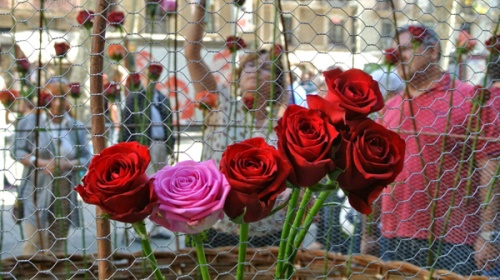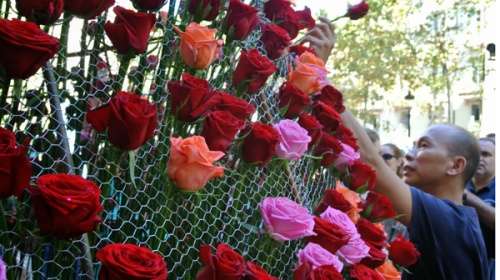Festa major de la Rambla
Activity dates
Dates de celebració
Around the Feast of the Mare de Déu del Roser
Feast Day: 7 October
Description
The Rambla is Barcelona and Ciutat Vella's iconic avenue, separating the Raval neighbourhood from the Barri Gòtic. In the past a stream, the Riera d’en Malla, flowed down here but when the Raval wall was built in the 15th century, the watercourse was diverted north. After that, the area gradually attracted more and more people and now it has become the city's nerve centre. The Rambla is packed with kiosks, the stalls of florists and bird sellers, itinerant actors, cafes, shops and restaurants. It is a street with its own identity, which explains why it has its own patron saint and festival.
The Associació Amics de la Rambla was set up in the 1960s to defend the interests of the Rambla's shopkeepers and promote trade. Soon the association began to organise the festa major in honour of their patron saint, the Mare de Déu del Roser. At first, they basically held a mass and offered flowers to the Virgin, bestowing the title of Honorary Ramblista on her too. These acts are still held today but the festa major involves a lot more, including fairs and exhibitions, cercaviles and joint meals for local residents and shopkeepers.
The actual dates of the festival vary from year to year. Normally it last three days and is held on the weekend before the Virgin's feast day, so it does not coincide with the long Pilar weekend.
Reason
The festival is held in honour of the Rambla's patron saint, the Mare de Déu del Roser. There is a statue in a little chapel dedicated to her on a Rambla facade adjacent to the Palau de la Virreina, where the florists offer flowers during the festival.
Origins
The festival began at the start of the 1960s, thanks to the Associació d’Amics de la Rambla, who decided to organise it to promote Rambla trade and traders.







